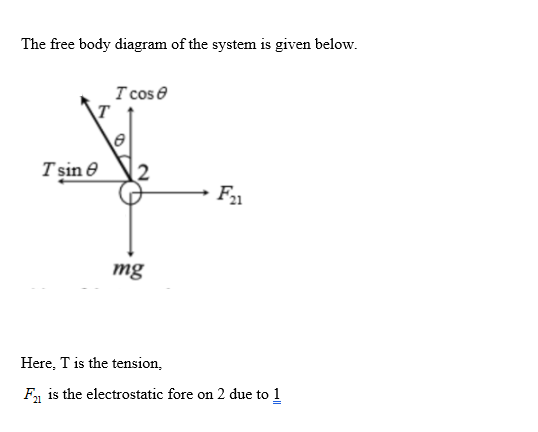In the figure above, two tiny conducting balls of identical mass m and identical charge q hang from nonconducting threads of length L. Assume that is so small that tan can be replaced by its approximate equal, sin 0. Find the magnitude of q in terms of the given variables (not including ), using to and 9 if necessary.
In the figure above, two tiny conducting balls of identical mass m and identical charge q hang from nonconducting threads of length L. Assume that is so small that tan can be replaced by its approximate equal, sin 0. Find the magnitude of q in terms of the given variables (not including ), using to and 9 if necessary.
Related questions
Question

Transcribed Image Text:9
q= 3.4710-8
L
Ꮎ Ꮎ
I
I
L
9
In the figure above, two tiny conducting balls of identical mass m
and identical charge q hang from nonconducting threads of length L.
Assume that is so small that tan can be replaced by its
approximate equal, sin 0. Find the magnitude of q in terms of the
given variables (not including 0), using € and g if necessary.
X
Expert Solution
Step 1

Trending now
This is a popular solution!
Step by step
Solved in 3 steps with 3 images
